Kelley Holderman: Co-Founder & CEO of Pirdie
Episode 491
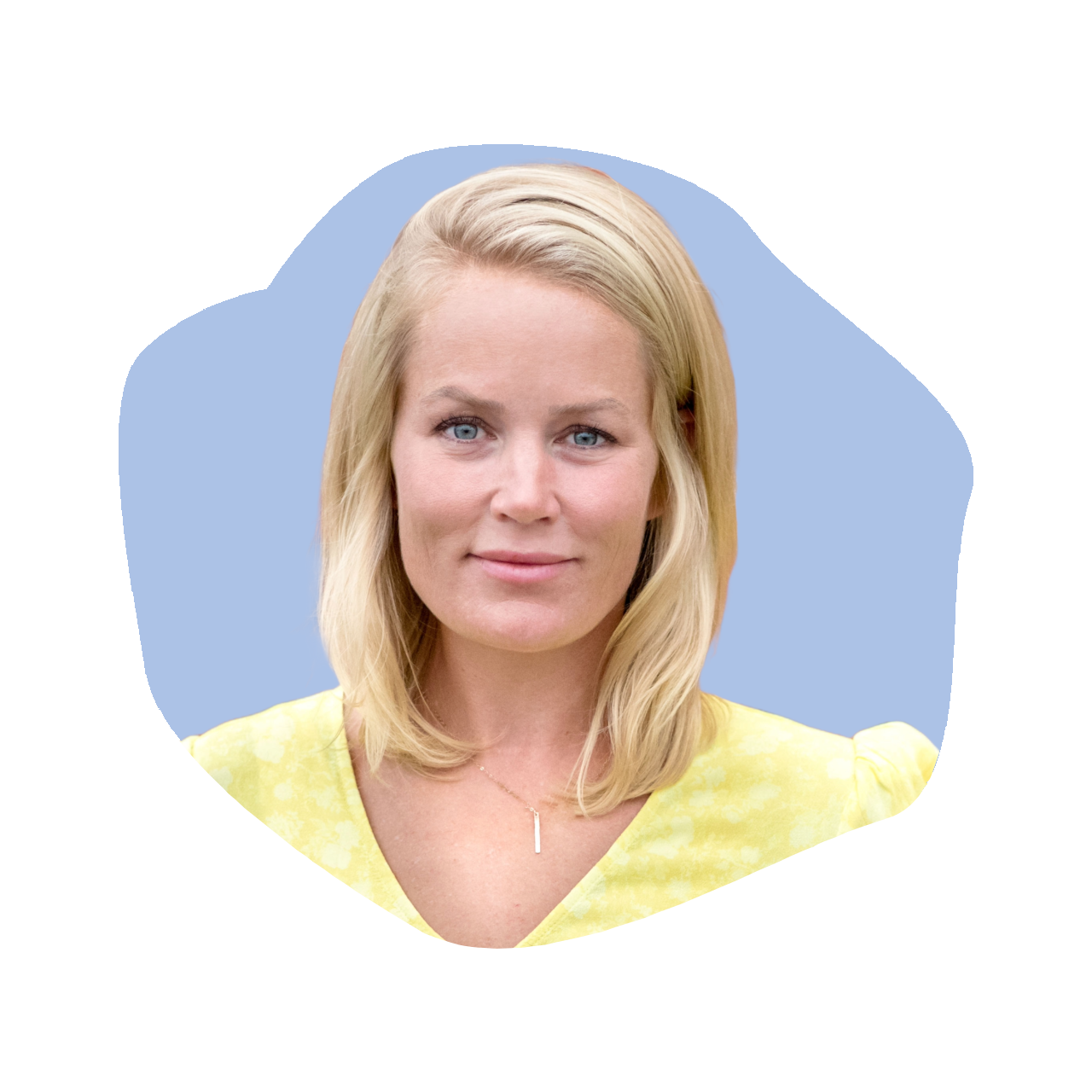
Kelley Holderman, Co-Founder and CEO of Pirdie, shares all about the women's golf apparel brand that she co-founded, offering West Coast designs and an empowering community to boot. Clothing that is inspired by the power of female friendship and West Coast aesthetic with durable, lightweight, and moisture-wicking fabrics. We learn all about what it takes to start a golf apparel in today’s market and one that is quickly becoming a fast favorite for many. You are going to love hearing this interview with Kelley! Listen now on this episode of #TheKaraGoldinShow.
Resources from
this episode:
Enjoying this episode of #TheKaraGoldinShow? Let Kara know by clicking on the links below and sending her a quick shout-out on social!
Follow Kara on LinkedIn – Instagram – X – Facebook – TikTok – YouTube – Threads
Have a question for Kara about one of our episodes? Reach out to Kara directly at [email protected]
To learn more about Kelley Holderman and Pirdie:
https://www.linkedin.com/in/kelley-h-6724906/
https://www.instagram.com/pirdiegolf/
https://www.pirdiegolf.com/
Transcript
Kara Goldin 0:00
I am unwilling to give up that I will start over from scratch as many times as it takes to get where I want to be I want to be, you just want to make sure you will get knocked down. But just make sure you don’t get knocked down knocked out. So your only choice should be go focus on what you can control control control. Hi, everyone and welcome to the Kara Goldin show. Join me each week for inspiring conversations with some of the world’s greatest leaders. We’ll talk with founders, entrepreneurs, CEOs, and really some of the most interesting people of our time. Can’t wait to get started. Let’s go. Let’s go. Hi, everyone, it’s Kara Goldin from the Kara Goldin show. And I’m so excited to have my next guest. Here we have Kelly Holderman, who is the co founder and CEO of an incredible brand new brand or fairly new brand called Pirdie. So if you haven’t heard of Pirdie yet, you’re going to be very excited to hop on their website and check it all out. So Purdy is a women’s golf apparel brand that offers a West Coast designs, and also has an incredible community around it to their clothing is inspired by the power of female friendship and the West Coast. Stetic with durable, lightweight and moisture wicking fabrics. So if you play golf, or if you just want to look like you’re playing golf, too, maybe you’ve got some other ideas for some other sports that you want to be wearing a lot of a lot of what Pirdie has to offer, we’ll get into that, I’m sure. But it’s quickly becoming a fast favorite for so many. And I’m super excited to speak with Kelly today. She actually the company is based out of San Diego, we were chatting about that. One of my favorite cities, so very, very excited to have you here today. Kelly, welcome.
Kelley Holderman 1:56
Thank you, Carrie. I’m so excited to be here. And thank you for the warm and fantastic introduction. I too am super excited to share more about property and talk with you. So thanks for having me here this morning. Absolutely.
Kara Goldin 2:10
So can you share kind of the inspiration and journey behind founding Pirdie? I know that you’re a first time entrepreneur, and you had not actually done direct to consumer play, and certainly not in the golf space. So what was the inspiration behind this? And what were you doing before?
Kelley Holderman 2:31
Yeah, I know, you’ve talked on some of your other podcasts about how, you know, entrepreneurs come to the surface and how ideas are, transpire and to actually following them. And this was really just, you know, for what it’s, you want to call it a divine timing, so to speak. But I worked in the corporate world for almost 20 years and and transactional basis. And in commercial real estate, I realized I was kind of missing something from that career. And COVID hips, which was a crazy time for everybody. And during COVID golf courses were one of the only things open. I know this is not a story that is unique to just myself or the founders, a lot of people kind of discover golf in COVID. And it was open and it was we’re all going nuts staying inside, I have three kids of my own lots of homeschooling happening. So we took to the course. And there was about eight of us women that started to go on a regular basis. And really figured out that COVID As terrible as it was. One I guess silver lining from it was it ended up removing this veil of intimidation from the sport of golf for us. Because we went in golf out of the fact that it was the only thing open. And once we got out there, we realized we had this insanely supportive community of women out there that were golfing, and realize that you don’t have to be amazing, you don’t have to have been raised in a country club or given private lessons. And you really don’t have to be good to set foot on a golf course there’s rules to respect and there are dress codes that people follow and that are set in stone in certain places. But at the end of the day, the connection that we felt with with our group of women and being able to get on the course was really fulfilling and we realized we were kind of transitioning even after COVID our you know, monthly or weekly times to get together and connect with each other. Instead of the standard out of the box. You know, let’s go to dinner and drinks. It was let’s go to the golf course. We’re outside. We’re fueled by this fresh air we’re moving our bodies the connection is you know exponentially better when you’re just sitting in a cart with somebody and in dead silence with no distraction. And so it really became a routine and as we started to elevate our game past you know the little local course we realized yes the our dress code oats. And that there was nothing we could find that really felt like it made us feel confidence, and feminine and fun and a style that we wanted to embrace. So it really ended up being the timing of that, along with leaving the career that I had done for a while and just seeking something new. And really kind of smacked me in the face that what I was lacking before was connection and, and the ability to do this, and connect with my co founders that are very, you know, very, very strong level, because we founded a company together. And then just this community of people that we’ve grown to golf and encouraging more women to golf and to feel good when they’re doing it was really the basis for why we started pretty.
Kara Goldin 5:53
That’s awesome. So describing Pirdie, I mean, you talked a little bit about that you couldn’t find, but what what will people see when they go to the Pirdie site?
Kelley Holderman 6:02
Yeah, um, so we have three minds that have come together, one of our co founders is an interior designer, she has a very edgy eye for design. And between the three of us, we’ve really come together with several priorities, which is kind of have less of a you know, I hate using the word but preppy aesthetic that’s traditionally been affiliated with golf and golf, clothing, and to create pieces and clothing that are is versatile, right. So you know, given my experience in the, in the commercial real estate world, I would join golf outings with a lot of men very infrequently compared to often they would golf, and I would scurry to go pick out an outfit. And it would be not flattering, and really felt like it was a men’s line that was kind of, you know, slightly altered to fit a woman. So the priority of hurty is to if you’re going to spend the money on golf clothing, have it be versatile, not fitting your closet between tea time, the shirt I’m wearing right now is is a pretty piece that is very golf course appropriate. It’s moisture wicking, it moves with you, you can sweat in it, I can also wear it on a hike, and I can also wear it to a casual business meeting. So that was really the goal behind it was to have versatility. And then of course, a style that doesn’t really feel like it’s been met yet, which is, you know, kind of West Coast vibe. We have a lot of connections to like Tahoe, Southern California, obviously being in San Diego. And we don’t really feel like that that vitamin aesthetic had been pulled through to any women’s golf coats so far. So that was those are really kind of the core of the apparel that we offer. So
Kara Goldin 7:51
did any of you have apparel? backgrounds? Or how did you pull this together? Yeah,
Kelley Holderman 7:59
short answer is no. So there’s definitely a lot of layers to this business that parallel with things that we’ve all done in our past. Kendra, being a designer, obviously, is very focused on materials and patterns and colors. So that has parlayed great into the design of our clothing. And Jamie, our other co founder is actually used to be a social worker. And she’s really played a an integral part in kind of understanding like the, the wants, needs and shopping patterns of our customers. And I’m a numbers person and love, like kind of the back end of it all and just, you know, producing it all. So we short answer’s no, we did not have any, any history in it. But I actually think in hindsight, that was a gift, because we did have tried to hire a consultant at first to kind of help guide us through it. And what we ended up finding is that she was trying to repeat what had already been done, but was not in our opinion, succeeding, you know, within the industry and women’s golf apparel. And after that, we just kind of, as I said, went and pounded pavement, which meant we went into the LA Fashion District and met with everybody and anybody that we could that was a supplier of fabric, a designer, a production team. And all of our stuff is manufactured in LA by design because we want it to be there and keep tabs on it know who’s going know who’s dying are fabrics know where all this is happening, check in on it. And so we’re lucky enough that LA’s you know not too far from us. And so we’re able to just get there and do it ourselves. That being said, we we founded our company in 2021. And we didn’t launch until 2023, March of 2023. So we really took two years to educate ourselves on how we would want to do this. If we were to do it. What we can do go
Kara Goldin 10:00
the right way. And how did you figure out like what you would launch with? Initially? So what was kind of the, you know, sort of core items that you said, you know, here’s pretty?
Kelley Holderman 10:12
Yeah. That’s a great question. So we definitely tested the market with some smaller items, some hats and T shirts. Just to kind of see if the aesthetic of what we were going for was something that appealed to people. And the hats and the T shirts, are they have a slower ramp up time, or sorry, a shorter ramp up time, so we could get them to market quicker. And the feedback was great, and people loved the aesthetic love that it wasn’t elevating golf to this, like, you know, this, this level of like being untouchable, right, it felt comfortable, and it felt at on an even playing field with people that they wanted to wear it. So that kind of told us that we were in the right direction. And then from there, we really figured out what are pieces from each of our lives that we would wear to golf that we would then also wear somewhere else. We knew that our price point would be indicative of being manufactured in LA was very, very, very quality materials, and craftsmanship. And we felt very strongly that whatever we were going to design you could wear to happy hour you could wear to a business meeting, you could wear running around. And though the versatility of it was really primary and paramount in what we designed. So we came out with I think, four, three or four tops, a skirt and some bottoms at first, just to kind of get the basics out there.
Kara Goldin 11:47
So what were some of the biggest challenges or obstacles that you faced when you were first getting going? I mean, things that maybe you just had never dealt with in your own career, you were established in commercial real estate. But but this was, you know, these are widgets, right? Like sending apparel, packaging, I can only imagine sizing. We’ve had many people on who have started different apparel brands and different categories. And it’s, it’s, it runs the gamut of what the biggest challenges were for people. But I’m curious for you guys.
Kelley Holderman 12:26
Yeah, I think for us just understanding when no really means NO and NO MEANS maybe. So you’re relying on professionals to tell you what can and can’t be done? And sometimes they say no. And, you know, I kind of I think it’s akin to when I remodeled my house, my contractor would always say no, that can’t be done. And I’d say, but here it is, it hasn’t been done, it can be done. So really just kind of like pushing the envelope. But respectfully with vendors and saying, it might not be something you’ve been doing but feel like it can be done. Can we dig a little deeper? I think that part has been hard. And I think for me personally, I did come from a corporate world that was transactional and contractual deadlines and fine print and all the things. But I’m lucky enough now to work with a lot of people with very creative mind. And a lot of times I think that the creative minds don’t operate on that transactional deadline, kind of mindset. And so that transition has been has been very apparent.
Kara Goldin 13:39
Yeah, no, I think that’s so true. And especially the transition of, you know, you’re, you’re a brand new name, right, you’re new to them, there’s no relationship, right, but also, you’re a brand new brand. And so I think it’s like, they’re way more important than than you are, right? Especially initially, when you’re just trying to get samples out and you’re at the bottom of the totem pole versus being at the top. And I think it’s always like, you know, really hard I hear this a lot, even people who have been in the industry that they’re going into that it’s like when you come from a large apparel brand, and then all of a sudden you’re, you know, going in trying to create a brand new something, it’s it’s very different, the terms are different, the timing is different. Everything is is so different. So I think it’s like, you know, you have to get yourself back up, especially during those times that are super challenging.
Kelley Holderman 14:38
Yeah, and I think you just really have to anticipate that and build into your your your toughness, your emotions, your timelines, and everything, the fact that something’s not gonna go right. And it’s not a indicative of failure. It’s indicative of improving your overall process and your overall end product. So
Kara Goldin 14:56
how do you figure out that things are working Right that that it’s like, this is a business this is, I know that you fell funded this to date. And now you guys are going out to do bigger funding. And so how do you figure that out as a brand new founder that this is something that, you know, if we had more capital, we could do X, we’ve got the consumers that are really excited about what we’re doing. Obviously, you guys are building a great community too. But what do you like? What are the data points that you sit there and say, like, we’ve got it, we just need, you know, more capital?
Kelley Holderman 15:36
Yeah, that’s a great question. So I kind of have called this our redshirt year, we launched in March of last year. And if you know, if you don’t follow college, or it’s, it’s your year to kind of like, you know, get your feet wet and not actually count towards your four collegiate years is fourth. And so we launched in March of last year, which was a couple months after the PGA Show, which is a big kind of Springboard and launching spot for smaller emerging brands such as ourselves. We missed that last year, for reasons out of our control. So we really actually, again, divine time, have this, this 10 month, call it to kind of have our redshirt year to test things, figure out get honest feedback. And we really haven’t thrown a ton of money at like artificially gaining customers at this point. And not for reasons I don’t need to go into and I can’t if you want, but we’ve grown our community from what I call like arm’s length and community, meaning community is our customers, right? And I think that the short answer is that community of people are people that have become customers of ours through and we’ve never had negative feedback, I shouldn’t say never, we’ve had very, very little negative feedback on our apparel, even when we’re seeking it. And we are very much of the opinion, like, we’ve checked our ego at the door, whatever you want to tell us to improve. We’re all ears, right? Like what we do with that information is up to us. But please tell us. And so the feedback has been resounding that people love what we’re doing. They love what we’re making, we’ve been very focused on making apparel that sport every woman’s body. Our three founders have different bodies, that I mean, you couldn’t pick people that have three different complete silhouette. So we’ve really tried to address that and what we designed and how we design it so that every single woman can find something to feel confident. And we’ve we’ve heard the messaging that that is happening. And I think if you’re gonna dig into data, our return customer rate is great for small brand that hasn’t spent on targeting people through a ton of ads and stuff like that our return customer rate is, is really, really good. And our return rate is almost negligible. So returning meaning returning of items. So
Kara Goldin 18:04
that’s awesome. So social media, how important has social media been for your brand? And in terms of growing it, I would imagine you have very limited marketing dollars that you’re putting towards, you know, you’re not doing Super Bowl ads or anything like that. So how have you guys use social media? Yeah.
Kelley Holderman 18:26
So social media, my goodness, that is like, that’s the, you know, the beast, the it’s just, it’s very, it can be so overwhelming. And I think that you can get lost in the social media web so easily. And the initial reaction is to just do a little of everything. And you need this many followers so quickly. And of course, that’s a very important part of growth and a part of getting there. We kind of dialed it back a little bit stayed in our three foot world, so to speak, and tried to really develop some authentic direct connections with people in the industry, whether or not there’s somebody that’s going to help elevate our brand or not, but just trying to understand like the who’s in the industry, who’s willing to give us feedback, influencers, people in the PGA LPGA we’re trying to really focus on that younger generation of women golfing, who is that percentage of young female golfers is growing so much it makes me so happy knowing that but they’re gonna want they’re growing up. It’s like that Lululemon model right? Where moms and daughters are wearing the same thing. And we really see that kind of translating to to golf and female golfers eventually.
Kara Goldin 19:51
I don’t know if that’s awesome question. And I don’t know I think I think you did, but so currently you’re on direct to consumer. You’re selling Are you selling in stores to within golf stores within any clubs?
Kelley Holderman 20:04
Yeah, so we’ve we’ve tested a few clubs. So we are actually it’s timely because next week we are going to The PGA Show which is in Orlando. And that is one of the biggest, most premier buying conventions, I hate that word, but opportunities for retailers. So next week will be really a great launching pad for us in terms of scaling, our ability to be in more and more clubs. So by I think I kind of mentioned before, but by us launching in March of last year, we missed that Biden window, which was actually a blessing in disguise, we got to really understand our customers and feedback before we were pushing it down Club’s throats, right, and we now we have a little street credit. And we can really talk to these buyers and understand what they what they want need. And also understand that their actual members in these clubs and are asking for Pirdie to be in the club and are telling us please can you be in my club? Can you be my club, and now we have actual ability to talk to these buyers and say, hey, you know, this is the feedback we’re getting. And then it’s up to them.
Kara Goldin 21:16
What have you seen in terms of your launch? as kind of the thing that surprised you the most? Maybe you were putting? Maybe you just assumed that that everybody was a certain size? Or maybe you should have more sizes? Or maybe certain colors? Or is there anything that’s been sort of surprising to you?
Kelley Holderman 21:43
Yeah, um, two things, one, being that the the amount of support from women in, in, in the community of people we’ve met, and just our line of reaching out and saying, amazing jobs, so proud of you guys, keep going, has been so cool. It really has just been, right, when you just feel like oh my god, I’m spinning, this is a lot. You know, it’s the shot in the arm that you need. And it’s actually one of the reasons we always try to go, we do a lot of in person events, and we ourselves, get on the plane and go to the events and meet the people. It breathes life when you just feel a little bit overwhelmed, which is a natural part of being an entrepreneur, and to develop that connection that I was talking about before. I think Second of all, is something that we would love to change is feedback that women who aren’t? How do I say that? You know, I really think that that this generation is getting away from stick thin models everywhere. And there’s nothing against them, people, there’s nothing against people of all any body size and shape should feel comfortable. And receiving feedback from people that they shouldn’t play golf, because they don’t fit into the clothes is really heartbreaking. And something that is near and dear to us trying to solve. So everyone should try our clothing clothing on and feel like they can wear it onto the golf course. And they should not have the clothing be a barrier to entry for them playing golf in any form ever.
Kara Goldin 23:22
Yeah, absolutely. So when when you look at community overall, and you touched on this a bit, but that how you really feel like your audience is showing up. But how do you build community? Like how do you even start to build that and get people kind of talking about that? I think a lot of people feel like, they want to have more community for brands, but it’s hard, right? It’s hard to tell people like I’m open, I guess that’s what you start with. But how do you really start doing that? And you know, what kind of tactics do you think are really important for consumers? Yeah, um, Dickey with with you?
Kelley Holderman 24:03
Yeah, I think that we’ve really focused on what we call experiential retail. So yes, it’s still direct to consumer. But it’s experiential in the fact that someone’s holding a golf club or at an events and parties are there with them, and they’re able to touch, see, feel, and gain trust with our brand and with us as human beings. They’re also able to feel the materials, and they’re able to experience kind of that herd mentality of other people saying, Oh, my God, I bought this. It was so great. I love it and buying another one. And you can’t replicate that through the internet. And eventually you have to, but that person tells their friend and that is kind of that that founders grip street marketing, that there’s no way around, other than to get out and do it and eventually as you grow, we will have more people doing that for us. But, you know, I think one of the highlights of our year last year was a gal who we met through the community through social media. And she was kind of starting her own you know, golf influencer type thing. And as a bit of a side gig, but she just felt very aligned with, with Pirdie in terms of a lot of things her and so we kind of got to know her better via Instagram, we had a call with her she had some fundraisers we were trying to help with. And she lives in Nebraska, or sorry, Wisconsin, and she said, You know what, I’ve been really pushing to have an inaugural, women’s member guests, a lot of country clubs. If you’re not familiar with golf, we’ll have what’s called a member guests where a member can invite a guest, and it’s a whole weekend long. It’s fun, there’s dinners, there’s strains and a lot of socializing, people dress up. And this particular club, they had never had a female member guest ever in their history. And she pioneered having that at her club, and called us and said, Would you guys be a part of this? I know, it’s a crazy ask. And we looked at more like, I mean, I’m getting goosebumps right now, this is exactly what our brand is about. And we’ve got on a plane, flew to Wisconsin golf in the event met an entire tribe of people that were so aligned with. And yeah, we did come back with a lot of new customers. But we came back with like, people knowing that we are a face and that, you know, we’re cheering them on, we’re cheerleaders for what they’re doing, and the brand is aligned with it.
Kara Goldin 26:43
I love it. So what is your hope for poverty in the future? I mean, what is if, five years from now or maybe sooner than that? What do you hope to be able to make this brand out to be
Kelley Holderman 27:00
we would love to just be able to grow in the sense that we can offer more products, and more options. So scaling, our production would be great. And marketing so that, you know, like, we can’t get out and get in front of every single person that probably would want to experience and by Pirdie, we can’t we can’t get in front of every one of them physically. So being able to reach them through other avenues is a goal. But in five years, we just hope pretty is you know a name brand when it comes to women in golf, and young females in golf. And people want to wear it, not only because they feel good in it, and because they like the style, but they want to wear it because it represents like, you know, the evolution and a new era of golf apparel and golf in itself for women.
Kara Goldin 27:54
Definitely. So Kelly Holderman. Thank you so much co founder and CEO Pirdie. We’ll have all the info in the show notes, but really appreciate you coming on and good luck with everything. You guys are off to an amazing start. And yeah, totally and very, very excited. Thanks for sharing your wisdom.
Kelley Holderman 28:14
Thank you so much.
Kara Goldin 28:15
Thanks again for listening to the Kara Goldin show. If you would, please give us a review and feel free to share this podcast with others who would benefit and of course, feel free to subscribe so you don’t miss a single episode of our podcast. Just a reminder that I can be found on all platforms at Kara Goldin. I would love to hear from you too, so feel free to DM me. And if you want to hear more about my journey, I hope you will have a listen or pick up a copy of my Wall Street Journal, best selling book undaunted, where I share more about my journey including founding and building hint. We are here every Monday, Wednesday and Friday. Thanks for listening and good bye for now.
People Also Liked
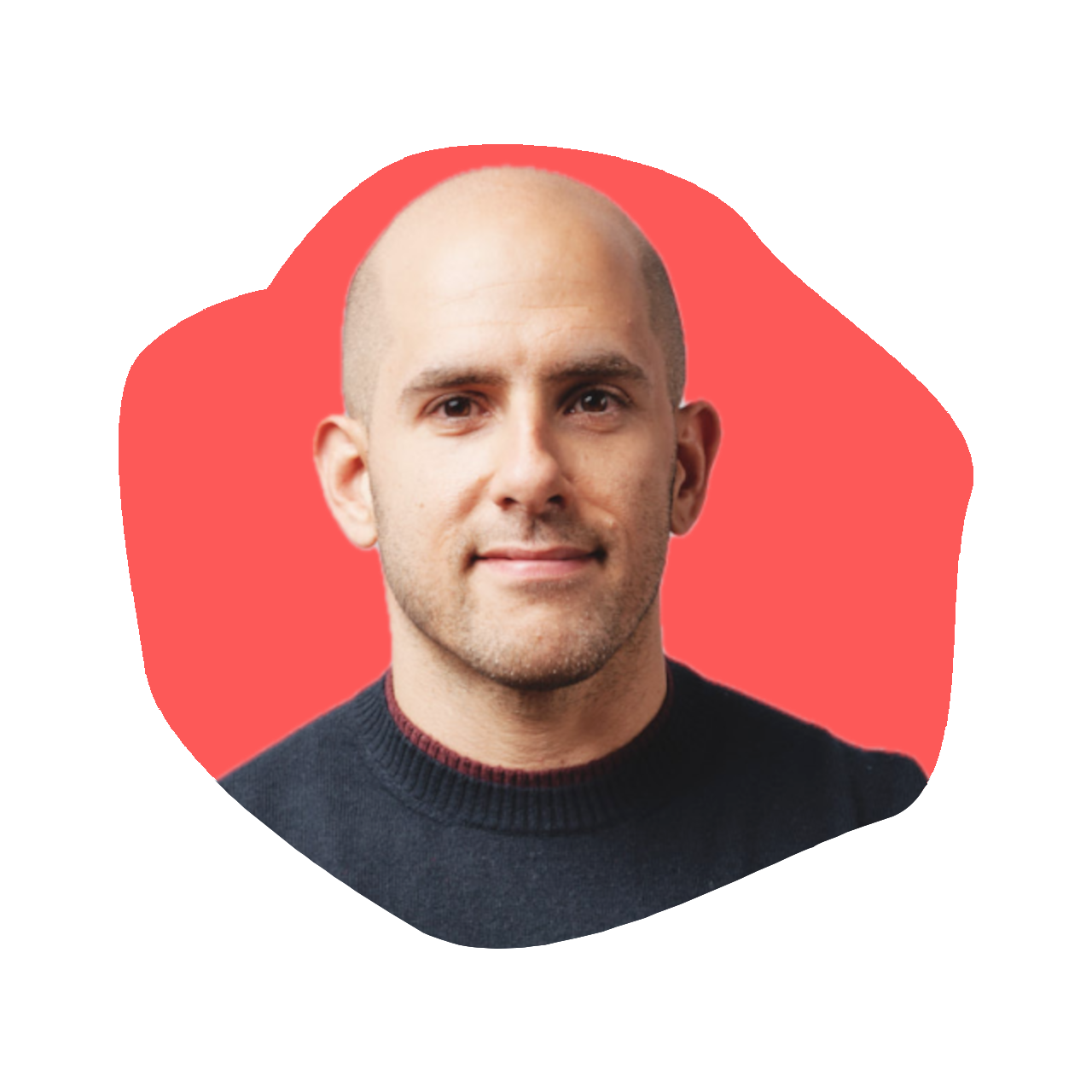
754
Nicolas Jammet: Co-Founder & Chief Concept Officer of Sweetgreen
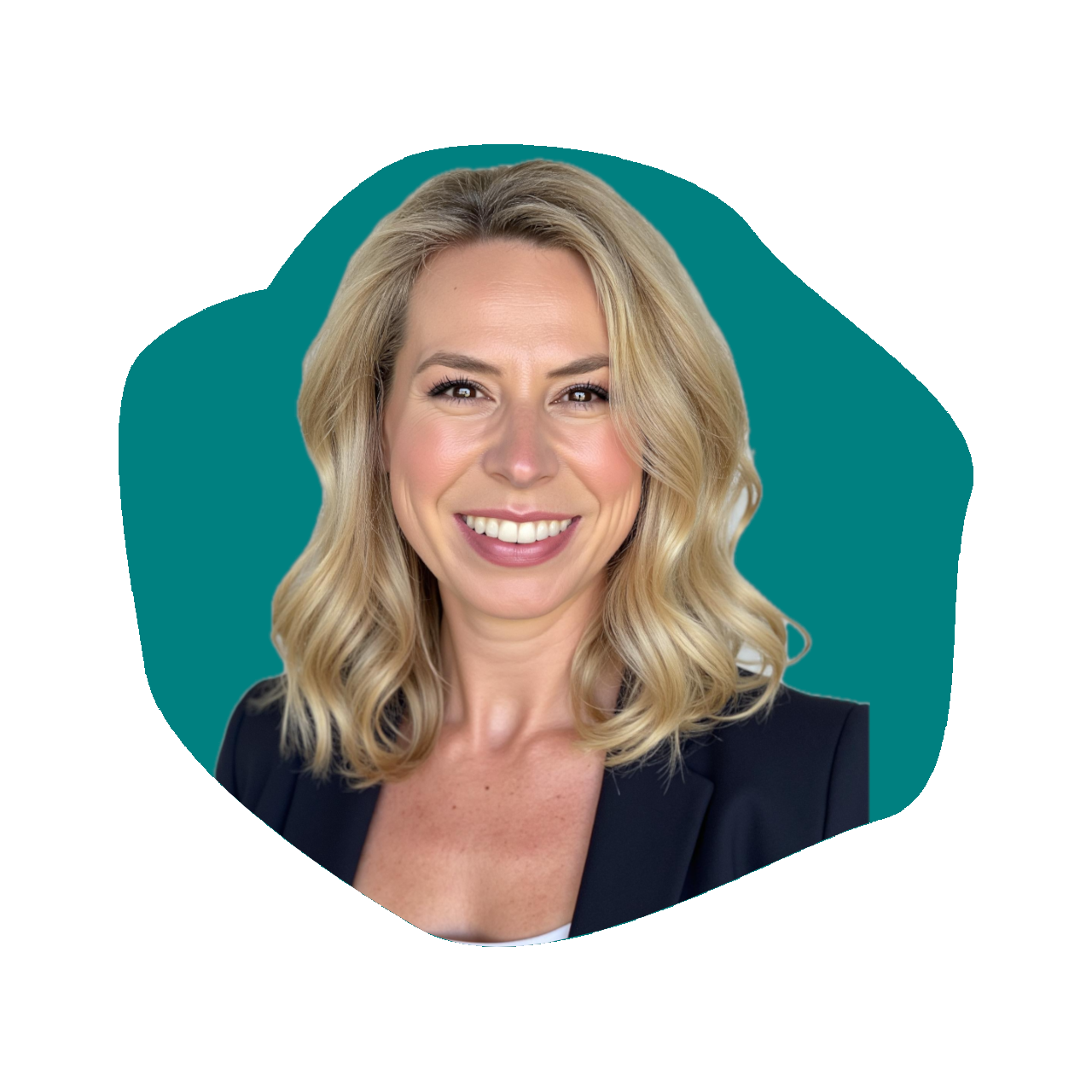
753
Katya Eckert: Founder & CEO of A DOMANI
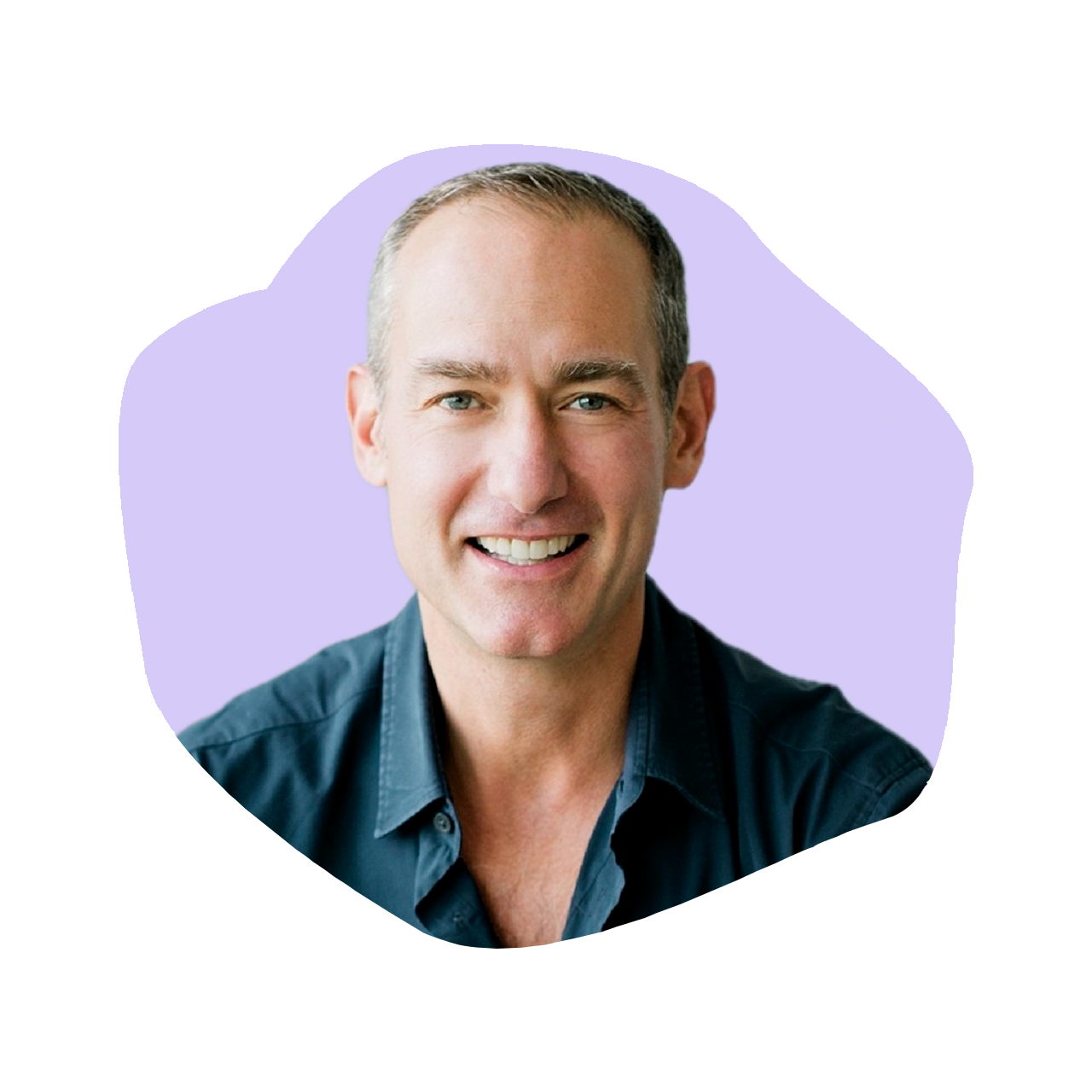
752
Mark Rampolla: Author of An Entrepreneur’s Guide to Freedom and Founder of ZICO
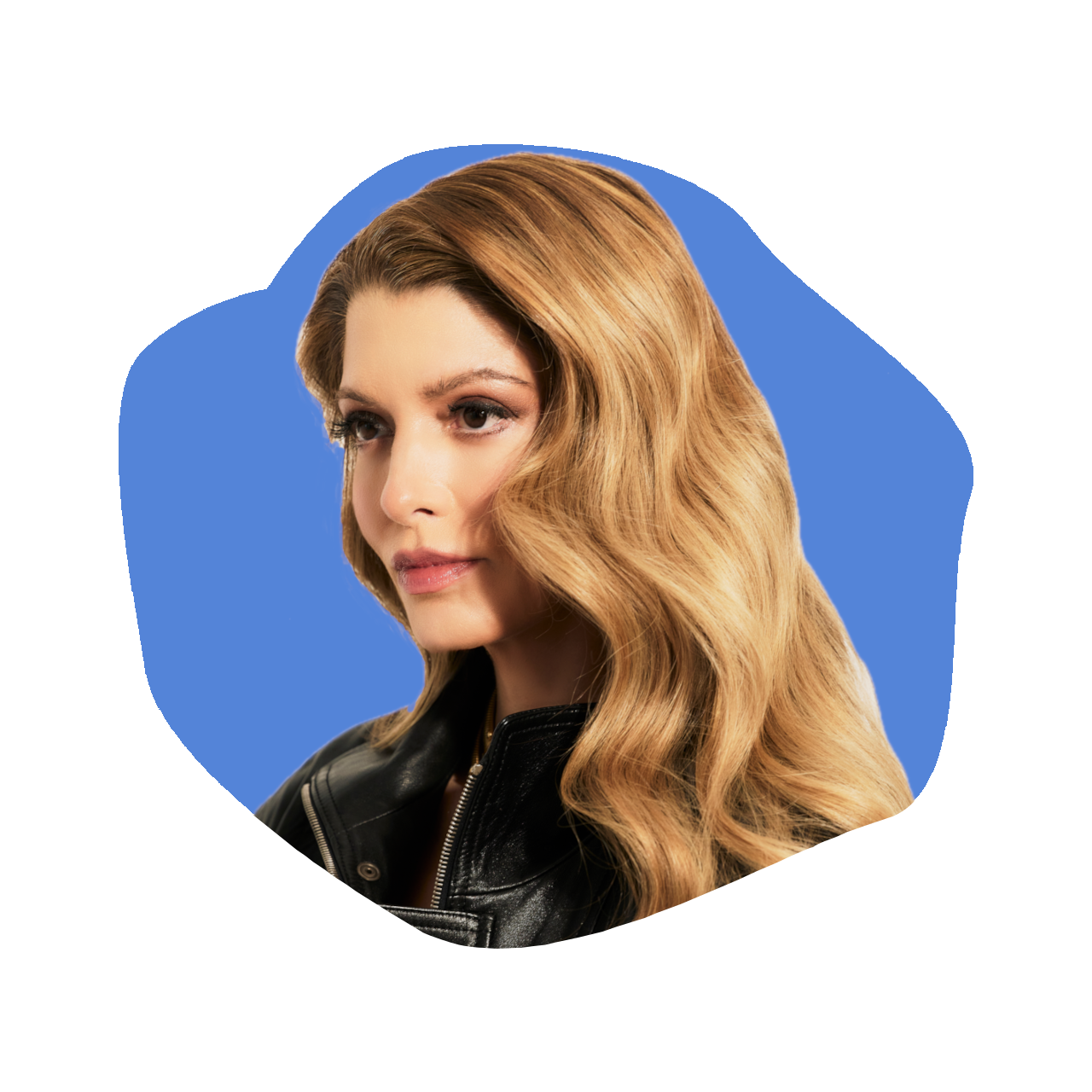
751
Deborah Pagani: Founder of Deborah Pagani Beauty
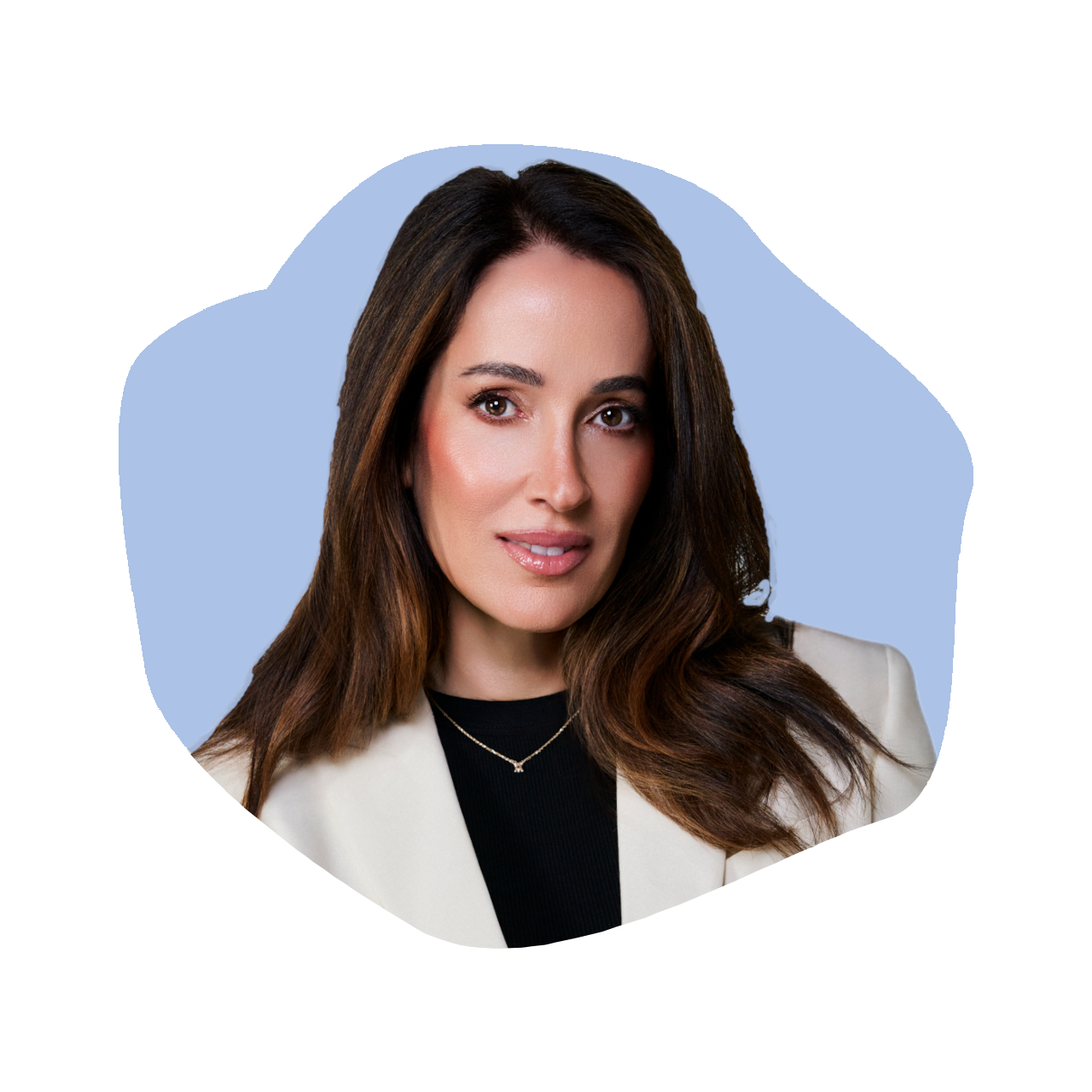
750
Angela Caglia: Founder & CEO of Angela Caglia Skincare




